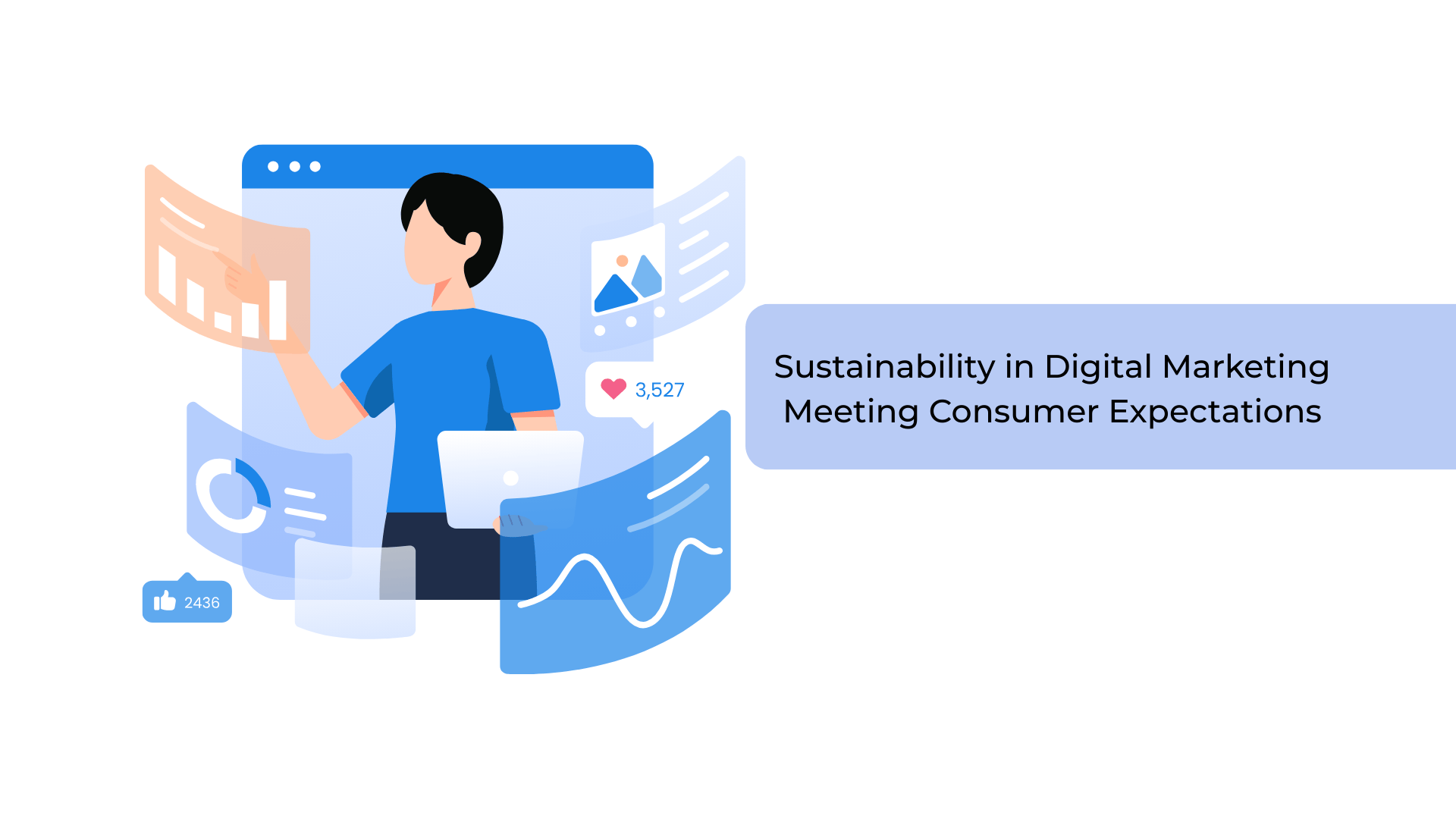Sustainability has become a significant priority for businesses and consumers in recent years. As climate change concerns, environmental degradation, and social responsibility dominate public discourse, consumers increasingly align their purchasing decisions with brands that share their values, especially regarding sustainability. In the digital age, where information is readily accessible and brands are more transparent than ever, there’s an expectation for businesses to not only market sustainably but to integrate sustainability into their core values and strategies.
This blog will explore how brands can align their marketing strategies with sustainability goals, meet consumer expectations, and gain a competitive edge in a rapidly evolving market.
Why Sustainability in Marketing Matters
Consumers today are more informed and selective than ever before. Research shows that a growing number of consumers are willing to pay more for products or services that are eco-friendly, ethically sourced, or aligned with social responsibility. According to a study by Nielsen, 66% of global consumers are willing to pay more for sustainable brands, and 73% of millennials are more likely to spend on brands that demonstrate a commitment to environmental and social issues.
This shift in consumer behavior has made sustainability a key factor in digital marketing strategies. Brands that ignore these trends risk alienating potential customers and losing market share to more responsible competitors. On the other hand, those that embrace sustainability can enhance their brand reputation, foster customer loyalty, and drive growth in an increasingly eco-conscious market.
Key Ways Brands Can Align Digital Marketing with Sustainability Goals
- Sustainable Branding and Messaging
Clear and transparent communication is critical to aligning digital marketing with sustainability. Brands must weave sustainability into their identity and messaging. All sustainability initiatives should be clearly highlighted in marketing communications, from eco-friendly product designs to carbon offset programs.
Whether through website copy, social media content, or email campaigns, ensure your sustainability efforts are evident. Highlighting key metrics such as carbon emissions reduction, sustainable sourcing, or fair trade certifications gives consumers a sense of the real impact your brand is making.
Example: Brands like Patagonia have successfully integrated sustainability into their messaging, consistently promoting their efforts towards environmental activism, responsible production, and transparency. Their campaigns focus on selling products and their environmental values, connecting with consumers on a deeper level.
- Content Creation Focused on Sustainability
One of the most effective ways to communicate sustainability is through engaging content. Create informative blog posts, social media content, videos, and infographics that highlight your sustainable products and educate consumers on broader environmental issues, sustainability tips, and industry innovations.
For instance, brands can create sustainability-related content such as tips for reducing waste, understanding eco-friendly certifications, or the environmental impact of certain materials. This content builds brand authority in sustainability while educating and empowering consumers to make better choices.
Example: IKEA’s “Sustainable Living“ blog series features actionable content about sustainable living, including product care tips and insights into how the brand works to reduce its environmental footprint. This approach fosters a relationship based on shared values with its audience.
- Social Media Campaigns Focused on Eco-Conscious Causes
Social media is an effective channel for brands to market products and raise awareness about environmental issues and social responsibility. Running eco-focused campaigns, collaborating with environmental organizations, and supporting sustainability initiatives through social media can engage consumers and show that your brand is making a real-world impact.
Encourage consumer participation through campaigns inviting them to share their sustainability efforts. User-generated content (UGC) can help promote eco-consciousness and build a sense of community around sustainability.
Example: Brands like Ben & Jerry’s have successfully used social media to support their environmental and social campaigns. For instance, their #SaveOurSwirled campaign focused on raising awareness about climate change while encouraging customers to engage with the brand on social media, amplifying the message.
- Sustainable Influencer Marketing
Collaborating with eco-conscious influencers is a great way to amplify your brand’s sustainability message. Influencers committed to sustainability and environmental causes can help promote your brand to their followers, giving you access to an engaged and eco-conscious audience.
The key is to choose influencers who authentically align with your brand values. Instead of focusing on high-visibility influencers, look for those with smaller, highly engaged communities that prioritize sustainability and social responsibility. Their credibility can make your message resonate more authentically.
Example: The Honest Company, founded by Jessica Alba, frequently partners with eco-conscious influencers to promote sustainable products and values. These influencers help build trust and encourage their audience to adopt more sustainable practices.
- Optimizing Digital Advertising for Sustainability
One often overlooked aspect of digital marketing is the environmental impact of digital advertising itself. As brands strive to meet sustainability goals, it’s important to consider the energy consumption and carbon footprint of digital advertising. Platforms like Google and Facebook have made strides in promoting sustainability in digital ads, and brands can further reduce their environmental impact by using energy-efficient advertising strategies.
Brands can take action by choosing ad networks or partners that align with sustainability goals, using energy-efficient servers, and reducing ad waste by targeting highly relevant audiences. Moreover, brands can promote eco-friendly products by highlighting their sustainability efforts.
For example, Google has committed to running its data centers on renewable energy. Brands looking to improve their digital advertising sustainability can partner with companies prioritizing environmental goals, ensuring their advertising footprint is as low as possible.
- Measure and Report Sustainability Efforts
Transparency and accountability are crucial to gaining consumer trust. Regularly measuring and reporting on your sustainability efforts helps build credibility. Consider providing annual sustainability reports, publishing environmental impact metrics, and sharing progress updates.
This reporting can be done through digital channels such as your website, email newsletters, or social media. Tell your audience about your ongoing efforts and the tangible steps you’re taking to reduce your environmental footprint.
Example: Unilever has been transparent about its sustainability initiatives and regularly shares updates about its progress through detailed sustainability reports. This transparency fosters trust and shows consumers that the brand is genuinely committed to sustainability, rather than merely using it as a marketing tactic.
Benefits of Sustainability in Digital Marketing
- Building Trust and Loyalty
Today’s consumers value authenticity, and aligning your brand with sustainability initiatives shows that you care about more than just profits. By demonstrating commitment to sustainable practices, brands can build trust and foster long-term customer loyalty.
- Attracting Conscious Consumers
Eco-conscious consumers are actively seeking out brands that align with their values. A strong focus on sustainability in your marketing efforts can help attract this growing market segment, giving you a competitive advantage.
- Driving Positive Brand Image
Standing out with a strong sustainability message in a crowded marketplace can significantly enhance your brand’s image. Consumers are more likely to choose brands that contribute to social good, especially when those efforts align with their values.
- Supporting Regulatory Compliance
As governments worldwide introduce stricter environmental regulations, brands that embrace sustainability early on will be better prepared to meet these regulations, avoiding potential fines and penalties.
Conclusion
Sustainability is no longer a niche concern but a mainstream expectation, especially in digital marketing. By aligning marketing strategies with sustainability goals, brands meet consumer expectations and build a strong, positive reputation that drives long-term success. Whether through transparent messaging, eco-conscious campaigns, or responsible content creation, brands that embrace sustainability in their marketing strategies will benefit the environment and position themselves as leaders in a rapidly changing market.
For businesses looking to integrate sustainability into their digital marketing efforts, partnering with a digital marketing agency in Guwahati can provide the expertise needed to create impactful and eco-friendly campaigns. A marketing agency in Assam can help you craft strategies that resonate with today’s conscious consumers and align with your sustainability goals.
To learn more, check out this digital marketing agency in Guwahati.

